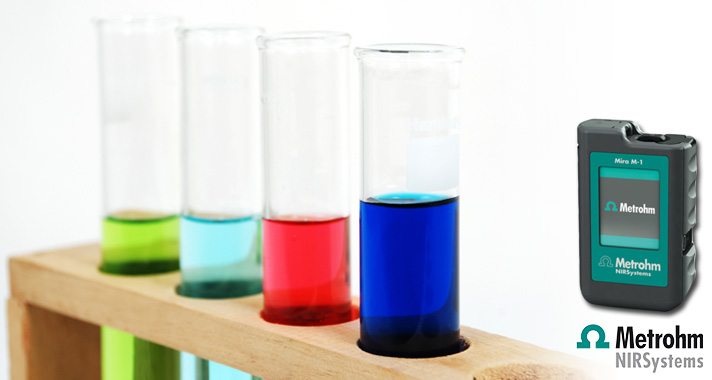Metrohm’s handheld Mira Raman Spectrometer allows for on-location rapid determination of the purity of acids and solvents.
Raman spectroscopy, like infrared (IR), probes the fundamental vibrational motions of a molecule. In Raman spectroscopy, the shift in wavelength of scattered radiation provides chemical and structural information. Each peak in Raman spectrum is associated with a unique part of the molecule and can be used for identification and confirmation. These unique peaks are most relevant in the Raman shift range of 400 to 1800 cm-1, giving rise to the nickname of the “finger print” region. This region of the spectrum is compared to library spectra for the proper identification and confirmation of chemical identity. The clarity of the Raman fingerprint makes it ideal for library matching. Extensive spectral detail dramatically increases the accuracy, reliability, and ease of identification and confirmation measurements.
The key advantage of Raman spectroscopy is that it requires little to no sample preparation. Samples can be analyzed through glass or clear packaging. Furthermore, water does not interfere with Raman spectra, giving Raman methods a distinct advantage over IR and near-IR. Beyond offering highest selectively for organic compounds, Raman is also suitable for polyatomic inorganic salts. In short Raman spectroscopy combines the selectivity of IR and simplicity of NIR making it a powerful tool for qualitative analysis.
This application work describes the rapid method to determine purity of polyatomic inorganic acids and organic acids by means of spectral correlation value using handheld Raman instrument.









